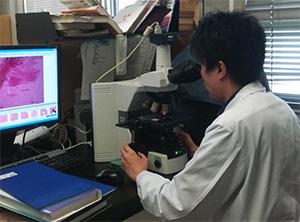Forensic Pathology
Forensic pathology is the academic discipline used to reach a comprehensive diagnosis of the cause of death of a deceased individual or the severity of injury in a living person, by performing an autopsy, tissue tests, or by other means; the term is used synonymously with “legal medicine” in its narrow sense. In the case of a deceased person, correctly identifying the cause of death or injury helps to protect the human rights of the deceased individual and contributes to the safety of the community.
The cause of death is not the only factor to be analyzed. For example, there may be cases in which death may have been caused by either a condition such as subarachnoid hemorrhage or by trauma, and other findings must be used to determine which was responsible. If an injury has occurred, forensic pathologists must decide whether it was the cause of death, and what sort of weapon might have caused such an injury. In the case of a traffic accident, they may investigate the victim’s injuries to determine the direction in which they were hit and injured by the vehicle, and if more than one vehicle was involved, then which vehicle was responsible for which injury. They may also be asked to estimate how much time has passed since death, and to look for distinguishing marks or surgical scars on unidentified bodies.
In the Department of Forensic Pathology, our aim is to proactively teach young doctors to become autopsy doctors and researchers who have the ability to detect critical details. We are also engaged in lively research on the methods of more accurate and detailed testing. Those of us who are registered doctors are involved in studies that apply the fruits of this research to autopsy practice, with the aim of further improving testing based on our research.


